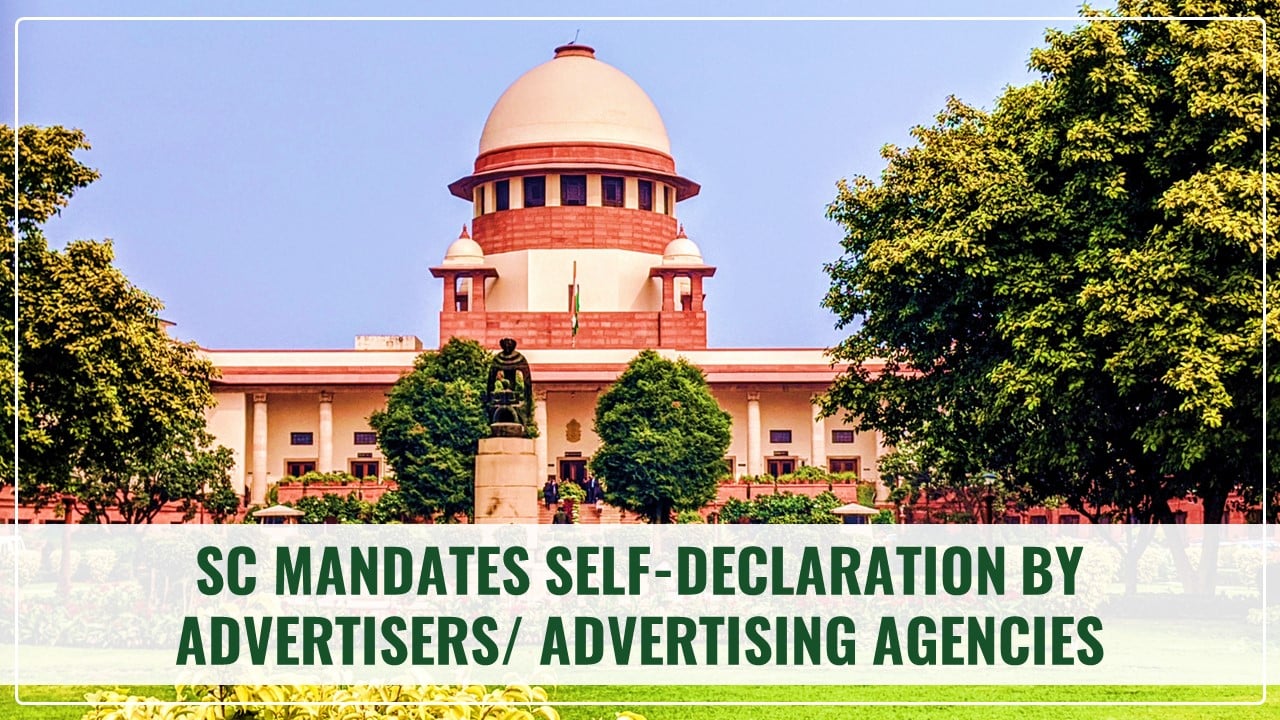
If you are a marketer or a media buyer, we are sure you would have heard this news. The Honourable Supreme Court of India recently issued a directive that aims to hold advertisers accountable for the content of their ads. It is mandatory for advertisers, to submit a self-declaration certificate before broadcasting or publishing each advertisement.
The directive covers all types of advertising media i.e. print, broadcast, radio and digital. As with any new government directive, there has been apprehension around the self-declaration ruling. However, it’s simple. We will break down the ruling and the steps involved. Let’s explore.
What is the Self-Declaration Directive?
The Supreme Court of India issued Self-Declaration directive on 7th May 2024. It mandates that starting 18th June 2024, no advertisement will be allowed to run on print, television or digital media without a valid Self-Declaration Certificate.
Advertisers will need to submit proof of uploading the Self-Declaration Certificate to the applicable electronic media platform, printer, broadcaster or publisher. For example, you need to submit your Self-Declaration Certificate to Facebook for each advertisement you wish to publish.
Why was the Self-Declaration directive issued?
Traditionally, advertisements have been regulated by the Advertising Standards Council of India (ASCI). ASCI claims to monitor advertisements proactively but they function based on self-regulation. It is interesting to note that their approval is not required before taking ads live. Plus they largely hold advertisers accountable based on third-party complaints. It has been infrastructurally difficult to monitor misleading advertisements and illegal.
The volume of advertisements has only increased due to the advent of digital advertisements. Just imagine the number of ad formats that, a single brand publishes for a Facebook advertisement. It is humanly impossible to monitor advertisements being produced at scale.
A self-declaration system makes advertisers legally liable for the advertisement being published. It would be now easy to hold advertisers accountable for the information being put out by them.
What does the Self-Declaration Certificate certify?
The Self-Declaration Certificate will certify that the advertisement being published is not
1) making misleading claims
2) complies with all regulatory guidelines.
Regulatory guidelines include those stipulated in the Norms of Journalistic Conduct of the Press Council of India and Rule 7 of the Cable Television Networks Rules, 1994.
Where do we submit the Advertisement Self-Declaration?
Media | Portal |
Radio | |
Television | |
Digital Advertisement |
Who can submit the Advertisement Self-Declaration?
Any authorised representative of the advertising agency or the advertiser can sign the self-declaration certificate and submit it. He/she would be acting on behalf of the advertiser/advertisement agency. The representative would need to submit a valid mobile number and email address.
Additionally, one needs to submit a Letter of Authorisation. Such a letter identifies that the said person is authorised to submit the self-declaration on behalf of the advertiser or advertising agency.
What documents need to be submitted along with the Advertisement Self Declaration?
Title of Advertisement
Details of the product being advertised
A short description of the advertisement which specifies the features being highlighted and the claims being made. This could be 100-200 words
Script used in the advertisement (video and audio advertisement)
Link to the advertisement file i.e. audio and video of the TV/radio/digital ad OR link to PDF file with print/static ads
Proposed date for publishing/broadcasting advertisement
Letter of Authorisation (mentioned above) which identifies the Authorised Representative
CBFC certificate for theatre advertisements
What is the Self-Declaration Submission Process?
Step 1
If you are the authorised representative for the advertiser/advertising agency, visit the applicable portal for Self-Declaration. See table above.
Step 2
Sign up and create a Self-Declaration Account. You will be asked to submit details like name, designation, email address, mobile number, organisation name and Letter of Authorisation.
Step 3
Create a new self-declaration request. Fill in and submit details of the advertisement as specified in the section above. We are done!
The procedure for submission of the self-declaration for advertisers is fairly simple. Our advice would be to quickly brief your teams about the new process and appoint your authorised representative. Going ahead, you would need to incorporate a buffer for this process, in your workflow. While we foresee some teething issues, over time, it would be second nature. All the best!
– By Aditi Shanbhag
